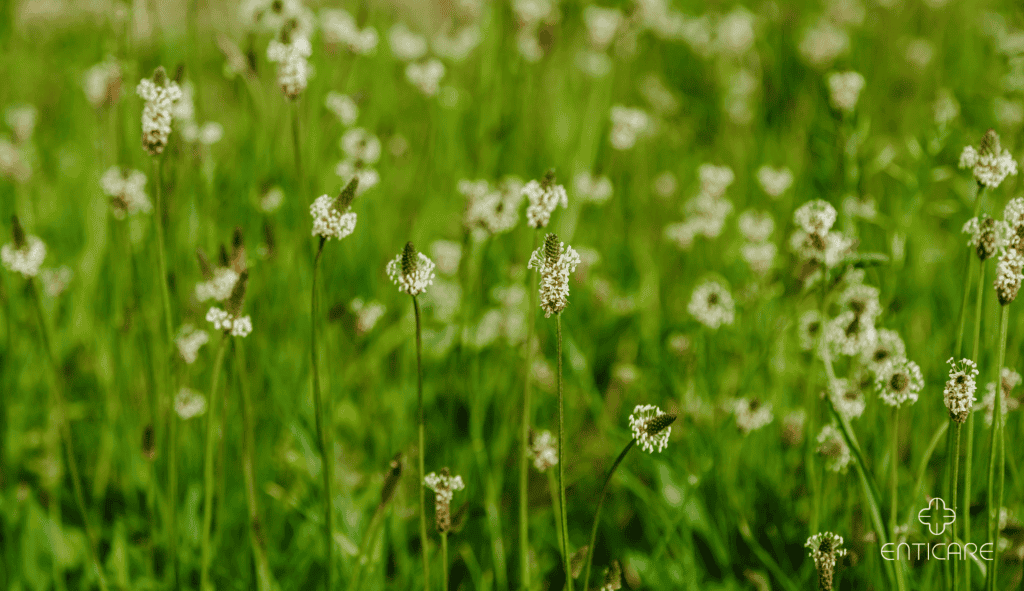Spring is here, bringing with it blooming flowers, chirping birds, and… itchy eyes, runny nose, and constant sneezing? If you experience seasonal allergies but haven’t pinpointed the culprit, you might be surprised to learn it’s the humble English plantain weed.
The English plantain, also known as narrowleaf plantain or buckhorn plantain, is a common weed found throughout North America. While it has medicinal uses, its pollen can wreak havoc on allergy sufferers.

Origin in North America
Though its name suggests otherwise, the English plantain is not native to North America. It’s believed to have been introduced by European settlers. This persistent weed thrives in various climates and can be found in lawns, parks, and even sidewalks.
Season
Unlike some allergies, English plantain pollen season is a marathon, not a sprint. Symptoms typically begin in May and can linger until the first frost arrives in November. This extended season makes it a particularly bothersome allergy for many.

Signs and Symptoms
If you suspect English plantain is triggering your allergies, be on the lookout for these common symptoms:
- Runny or stuffy nose
- Itchy, watery eyes
- Sneezing
- Coughing
- Scratchy throat
- Headaches (in some cases)
Causes
The culprit behind your woes is the protein found in English plantain pollen. When inhaled, your immune system mistakenly identifies it as a threat and triggers an allergic response, leading to the frustrating symptoms mentioned above.

Prevention
Here are some tips to minimize your exposure to English plantain pollen and alleviate allergy symptoms:
Track pollen counts: Check daily pollen forecasts and limit outdoor activities when counts are high.
Stay indoors during peak pollen hours: Mornings are generally the worst time for pollen allergies.
Keep windows closed: Especially during peak pollen times.
Change clothes after being outdoors: Pollen can cling to your clothes, so take them off and wash them after spending time outside.
Shower before bed: This removes pollen from your hair and skin.
Use air purifiers: Air purifiers with HEPA filters can help trap pollen indoors.
Risk Factors
While anyone can develop an English plantain allergy, certain factors can increase your risk:
Family history of allergies: If you have a family history of allergies, you’re more likely to develop allergies yourself, including English plantain.
History of hay fever: People with hay fever are more prone to develop allergies to other airborne allergens like pollen.
Asthma: English plantain pollen can worsen asthma symptoms.
Treatment
There’s no cure for English plantain allergy, but several treatment options can manage your symptoms and improve your quality of life:
Over-the-counter medications: Antihistamines can help alleviate allergy symptoms like itchy eyes, runny nose, and sneezing. Decongestants can help clear nasal congestion.
Nasal corticosteroids: These prescription medications can effectively reduce inflammation in the nasal passages, offering long-term relief.
Allergy shots (immunotherapy): This long-term treatment involves gradually increasing your exposure to English plantain pollen over time, desensitizing your immune system and reducing your reaction to the allergen.
Living with an English plantain allergy can be frustrating, but with proper knowledge and management strategies, you can enjoy the beauty of spring without the misery of allergies. Kickstart your journey to improved well-being. Explore the range of treatments at Enticare. Call us now at 480-214-9000!

